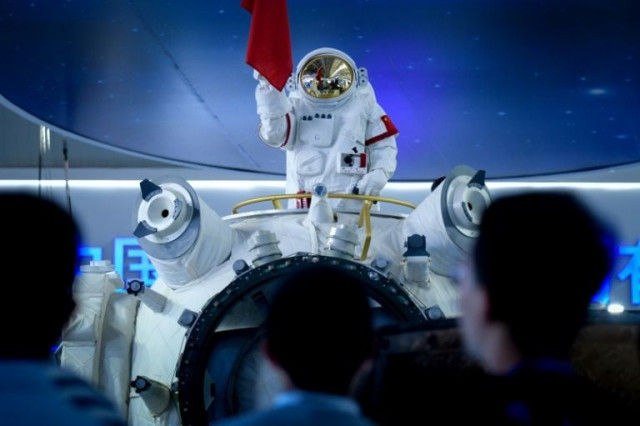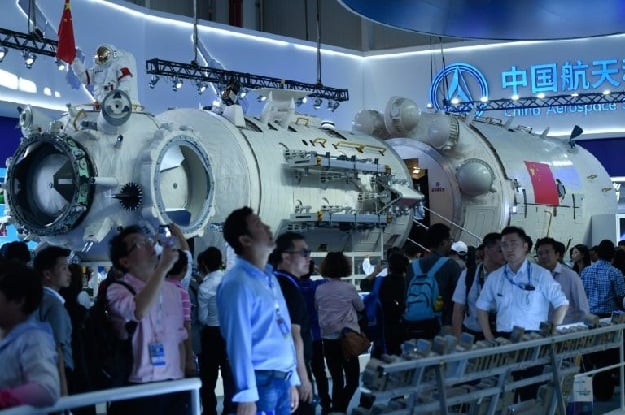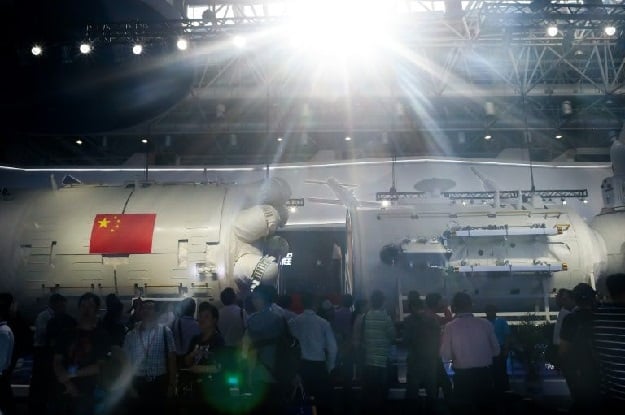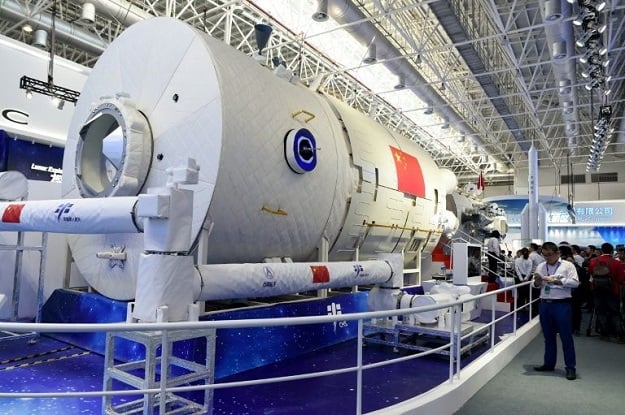China unveils new 'Heavenly Palace' space station as ISS days numbered
China is pouring billions into its military-run space programme with plans to send humans to Moon in the near future

China unveiled a partial model of its manned space station at an aerospace fair in Zhuhai. PHOTO AFP
The 17-metre (55-foot) core module was a star attraction at the biennial Airshow China in the southern coastal city of Zhuhai, the country's main aerospace industry exhibition.
The model represented the living and working space of the Tiangong — or "Heavenly Palace" —which will also have two other modules for scientific experiments and will be equipped with solar panels.
Three astronauts will be permanently stationed in the 60-tonne orbiting lab, which will enable the crew to conduct biological and microgravity research.
 China unveiled a partial model of its manned space station at an aerospace fair in Zhuhai. PHOTO AFP
China unveiled a partial model of its manned space station at an aerospace fair in Zhuhai. PHOTO AFPAssembly is expected to be completed around 2022 and the station would have a lifespan of around 10 years.
The International Space Station — a collaboration between the United States, Russia, Canada, Europe and Japan — has been in operation since 1998 but is due to be retired in 2024.
China space lab likely to hit Earth on Monday
China will then have the only space station in orbit, though it will be much smaller than the ISS which weighs 400 tonnes and is as large as a football pitch.

China unveiled a partial model of its manned space station at an aerospace fair in Zhuhai. PHOTO AFP
The country announced in May that the lab would be open to "all countries" to conduct science experiments.
Research institutes, universities, and public and private companies have been invited to propose projects. It has received 40 plans from 27 countries and regions, according to state media.
First Pakistani will go into space in 2022: information minister
The European Space Agency has sent astronauts to China to receive training in order to be ready to work inside the Chinese space station once it is launched.
 China unveiled a partial model of its manned space station at an aerospace fair in Zhuhai. PHOTO AFP
China unveiled a partial model of its manned space station at an aerospace fair in Zhuhai. PHOTO AFPChina is pouring billions into its military-run space programme, with plans to send humans to the Moon in the near future.
But it has encountered some glitches.
A space lab dubbed Tiangong-1 disintegrated as it plunged back to Earth in early April, two years after it ceased functioning.
Chinese authorities denied that the lab — which was placed in orbit in September 2011 as a testing ground for the permanent station — was out of control.
A second lab, the Tiangong-2, was launched into orbit in 2016.


















COMMENTS
Comments are moderated and generally will be posted if they are on-topic and not abusive.
For more information, please see our Comments FAQ